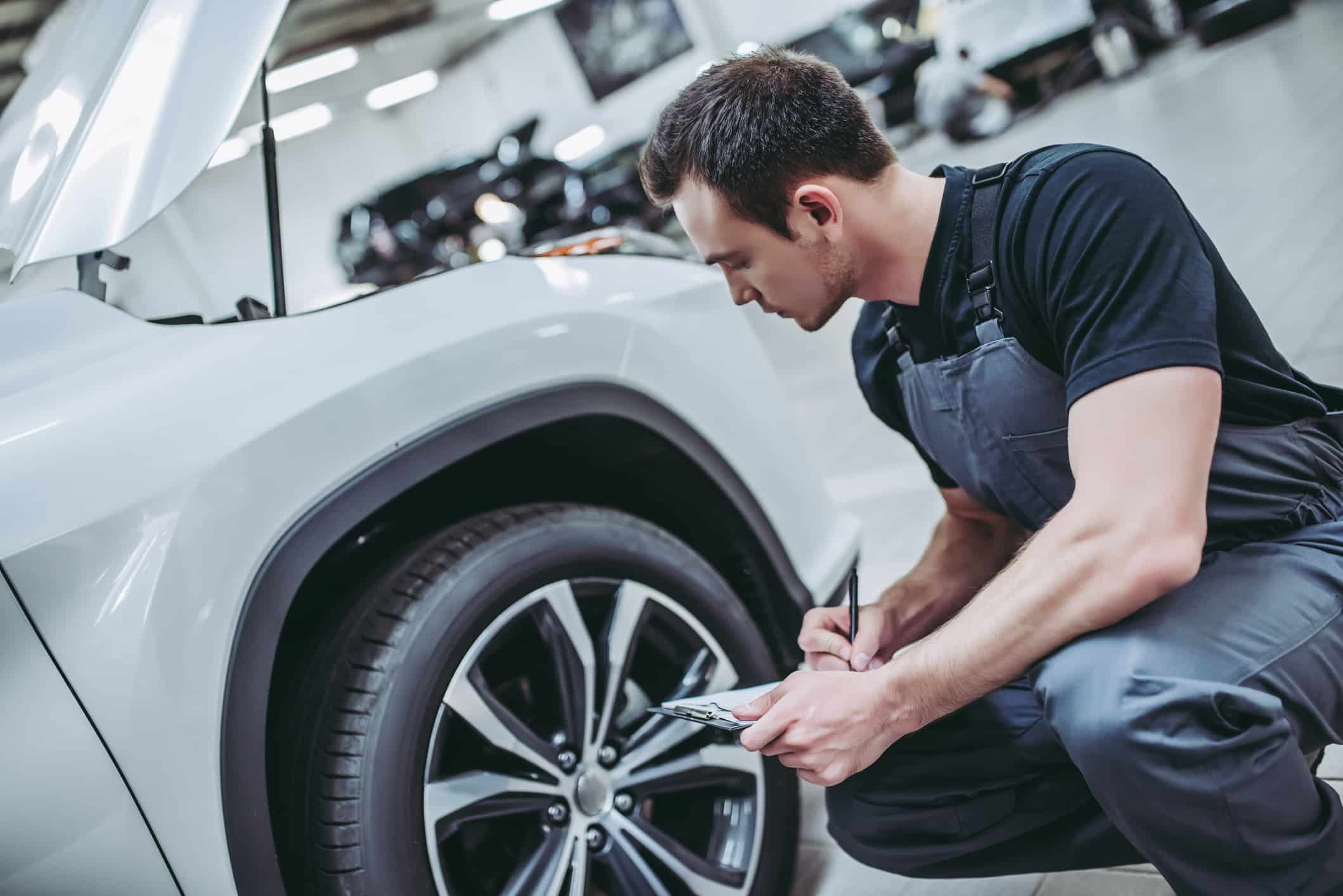The Most Common NCT Failures and How You Can Avoid Them
Simple Tips to Pass First Time

The NCT is a roadworthiness test for cars in Ireland that was first introduced in 2000 with the aim of improving road safety and ensuring cars meet emissions standards.
Over 1.7 million NCTs were carried out in the past year, but did you know over half of the cars tested failed? What’s more, many of the failures could have been avoided with a little preparation before the test.
In this article, we’re taking a detailed look at the most common NCT failures, along with practical steps to avoid them.
Most Common NCT Failures
According to data released by Applus who manage the NCT in Ireland, the most common NCT failures fall into two categories: visual defects spotted during a physical inspection of the car, and non-visual defects identified using specialist testing equipment.
Understanding what these issues are and how to prevent them can save you money and more hassle when test time comes around.
Top 5 Total Number of Visual Defects
Period: 01/10/2024 – 30/09/2025
1. Tyres - 14%
Tyres are the number one reason cars fail the NCT. When the tester is visually inspecting the tyres, they are looking for cracks, bulges and even mismatched or incorrectly sized tyres. Worn tyres are another red flag for testers, which refers to tyres that don’t meet the legal minimum tread depth of 1.6mm.
Since tyres are the most common NCT failure, pay special attention to them before bringing your car to the test centre. Check for cracks or bulges on the sidewalls, and ensure your tyres are properly inflated (including the spare) to the manufacturer’s recommendations, which can usually be found in the owner’s manual or on a sticker inside the driver’s door. Check the tread depth using a special gauge or a €1 coin: if the gold rim is visible, your tread is too low and the tyre will need to be replaced.
There’s also the age of the tyres to consider. A tyre that is six years old or older will get a ‘pass advisory’ at the NCT. You can find out the age by checking the four-digit code on the tyre sidewall. For example 1223 = week 12 of 2023.

2. Front Suspension - 11%
Another common NCT failure involves issues with the front suspension like worn-out shock absorbers, damaged springs or leaking suspension components. The first indication you might have of this issue is if your car feels bouncy, unstable or makes knocking noises over bumps.
Uneven tyre wear is another clue that suspension components may be worn or misaligned.
If you’re not sure, keeping your car regularly serviced with a reputable garage, or having a mechanic inspect your shock absorbers and bushings before the test, will flag any parts that need to be replaced.
3. Steering Linkage - 8.6%
The steering linkage connects your steering wheel to the wheels themselves. Wear or play in these joints can make the car feel loose or unresponsive.
You might notice that when you turn the steering wheel, the wheels don’t respond immediately, or you feel some vibration or knocking when turning. Again, you don’t have to be a car expert: with regular servicing or a pre-NCT inspection, a qualified mechanic will detect worn parts before they cause problems.
Keeping your steering system properly maintained also helps prevent premature wear on tyres and suspension parts so it’s a win-win.
4. Mechanical Brake Components - 8.5%
Another common NCT failure is brake components like worn brake pads and discs, leaking brake lines and corroded components.
To avoid this failure, have your brakes inspected regularly. If you hear squealing or grinding noises, or if your brake pedal feels soft or requires extra pressure, get it fixed immediately. Not just for the NCT, but for your safety.
Also make sure your handbrake is working properly and that brake fluid is topped up and changed as per the manufacturer’s recommendations or as part of regular servicing.
5. Bodywork - 6.9%
Rust, sharp edges or structural damage to your car’s bodywork can all result in an NCT fail. Testers are especially strict if corrosion affects safety-critical areas like sills, chassis or suspension mounts.
To avoid failing because of this, clean your car thoroughly before the test and inspect for rust or holes in the bodywork. Treat any small patches of rust early before they spread.
Make sure all doors, mirrors and seat belts are working properly. A tidy, well-maintained car helps you pass but also leaves a better impression on the tester.
Top 5 Non-Visual Defects
Period: 01/10/2024 – 30/09/2025
1. Beam Result - 8.6%
Did you know misaligned headlights are the number one reason for NCT failures based on non-visual defects? The beam can be set too high and dazzle other drivers, or too low and the lights just won’t illuminate the road ahead properly.
It’s an easy one to avoid with a little preparation. Do a quick check by parking in front of a wall, garage door or window and observing the lights. Both beams should be level and even.
If in doubt, most garages will adjust your headlights quickly and cheaply before your test.

2. Brake Test Result - 3.9%
Even if your brake components look fine and pass the visual inspection, they could still fail the brake performance test, which measures braking balance, strength and handbrake efficiency.
If your car pulls to one side under braking or the pedal feels spongy, that’s a warning sign that you might have brake issues.
If you’re not sure and looking for peace of mind, regular servicing or a pre-NCT brake test at a local garage can identify any imbalances before the official inspection.
3. Shock Absorber Overall Result - 2.2%
While suspension wear can be seen visually, the NCT’s shock absorber test measures how effectively these parts control movement. Poor damping can cause instability and longer stopping distances.
If your car feels bouncy or drifts excessively over bumps, your shocks may be worn. Replacing them improves comfort, safety and your chances of passing the test.
4. Gas Result - 1.7%
The emissions test measures how much pollution your car produces. High emissions are often due to poor maintenance, a clogged air filter or a failing catalytic converter.
Keep your engine properly serviced. Replace oil, air and fuel filters regularly, and ensure spark plugs are in good condition.
Before your test, take the car for a 15–20 minute motorway drive to fully warm up the engine and clear any carbon build-up.
5. Sideslip Overall Result - 1.4%
This test checks wheel alignment, which is how straight your wheels track when the car moves. Excessive sideslip indicates misalignment, which affects stability and tyre wear.
Have your wheel alignment checked every year or if you happen to hit a big pothole or kerb. Proper alignment not only helps you pass the NCT but also saves fuel and extends tyre life.
Conclusion
We know the NCT is a pain, but understanding the most common reasons why cars fail can help you to prepare for the test better and increase your chances of passing first time.
Things like regular servicing, timely repairs and a simple pre-test inspection by a qualified mechanic can make the difference between a pass and the hassle and expense of a retest.
Doing some basic car maintenance and keeping up with the service schedule gives you a higher chance of passing the NCT, but it also makes your car safer, more reliable and comfortable to drive.
Looking for a car insurance quote on your next car? Chill takes the hassle out of car insurance by comparing quotes from 14 leading insurers so you can rest assured knowing you got the best deal. Visit our website to get a car insurance quote in minutes!

